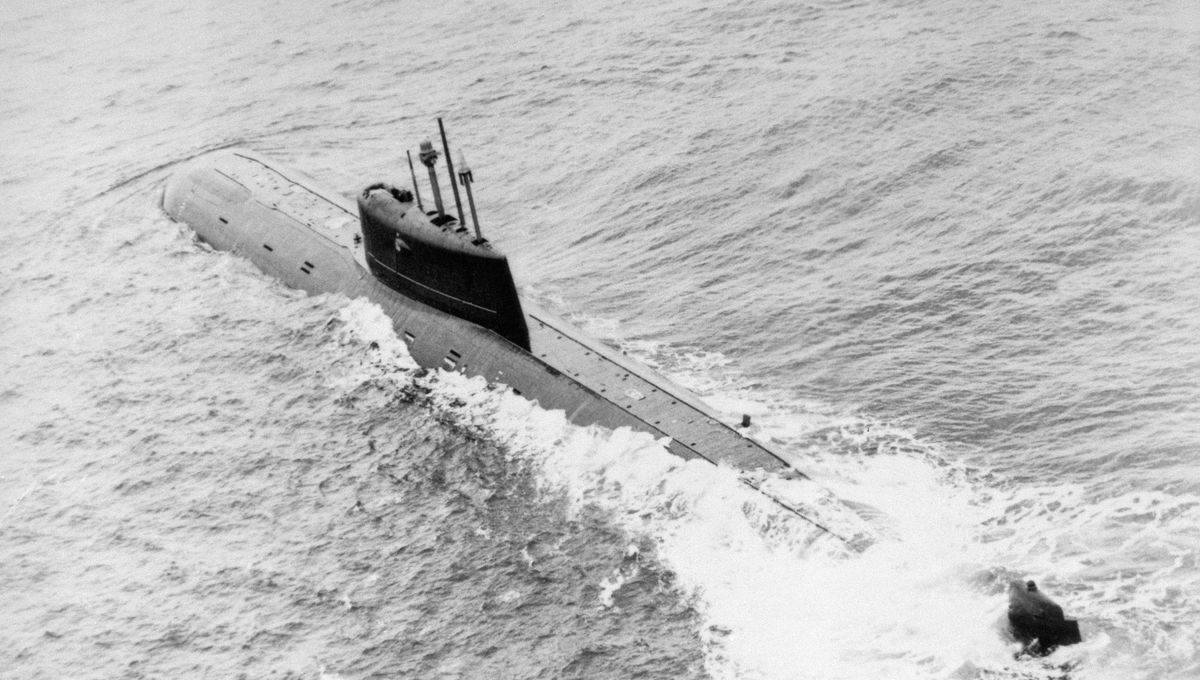
On April 7, 1989, a Russian nuclear submarine sank off the coast of Norway after a fire broke out on board as a result of a short circuit. At the time, the sub was carrying two nuclear torpedoes which it took with it to the cold depths of the Arctic Ocean. To this day, neither the vessel nor its weapons have been recovered and, unfortunately, it seems these artifacts from the Cold War have been leaking radioactive materials ever since.
A terrible accident
The Russian K-278 Komsomolets, as the submarine was called, was a nuclear-powered attack submarine that belonged to the Soviet navy. It was commissioned in 1983 and was one of the first submarines to have a titanium hull, which allowed it to dive to much greater depths than any of her competitors – the vessel could reach depths below 914 meters (3,000 feet). The K-278 was the only one of its kind to enter into service.
At the time of her fatal accident, K-278 was carrying out a routine patrol around 180 kilometers (112 miles) southeast of Bear Island, off the coast of Norway. She was about 152-381 meters (500-1,250 feet) below the surface when a fire erupted in the aft compartment (to the rear of the vessel) which, within minutes, caused a series of electrical problems across the submarine. As a result, the pressurized water reactor that powered the K-278 quickly shut down.
The crew fought the fire for several hours but eventually, the whole submarine flooded and sank to the sea floor. Of the 69 crew members on board at the time, only 27 survived. The majority lost their lives to hypothermia as they awaited rescue in the freezing sea.
What is the legacy?
For more than 30 years, K-278 and her nuclear torpedoes have rested at the bottom of the ocean in one of the richest fishing areas in the world. In that time, the seawater has slowly corroded the vessel’s hull and the casings surrounding its nuclear warheads, which have been leaking radioactive material into the surrounding ocean.
In 2019, researchers from Norway reported that some samples taken from the water at the K-278 wreckage site had about 800,000 times higher levels of radiation than what is normal for the Norwegian Sea. The samples of radioactive cesium (cesium-137) were collected from a ventilation shaft on the sunken vessel by a Norwegian remotely operated vehicle (ROV).
Although this figure seems extremely high, it is worth noting that other samples taken at the time did not show elevated values.
Whether the contamination is coming from the nuclear reactor or the torpedoes remains unknown. However, the Norwegian researchers did not feel there was a need for alarm just yet.
Since the early 1990s, the Norwegian Institute of Maine Research (IMR) and the Norwegian Radiation and Nuclear Safety Authority (DSA) have been monitoring and testing the waters around the wreckage. To date, any leakage taking place is occurring at levels that are not harmful to the surrounding environment. This is mostly because the vessel is so deep underwater that the pollution is being diluted before it can become hazardous.
According to modeling work performed by the IMR, even if all the radioactive cesium onboard K-278 were to leak out at once, the impact it would have on the surrounding sea life would be negligible.
Source Link: Sunken Nuclear Submarine May Be Leaking Radiation Into The Ocean